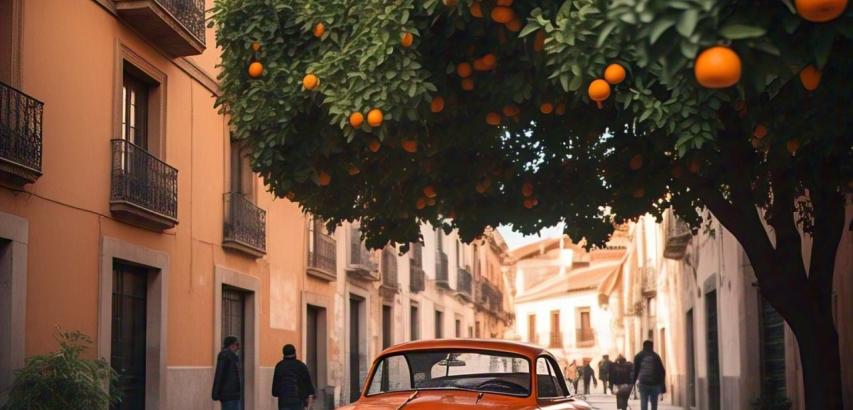Spain is famous for its lush orange groves and vibrant citrus fruits, particularly in regions like Seville, Valencia, and Andalusia. However, beyond the agricultural fields, orange trees are a common sight lining public streets in cities and towns across the country. These ornamental orange trees add charm and beauty to urban landscapes, especially during spring when their fragrant blossoms fill the air. But when the fruit ripens, managing these public oranges becomes a responsibility of the local government.
Why Are Oranges Collected from Public Streets?
Preventing Hazards
Fallen oranges can create slippery surfaces on sidewalks and roads, posing risks of accidents for pedestrians and vehicles.
Maintaining Cleanliness
Accumulated oranges can rot, leading to unpleasant odors and attracting pests like insects and rodents.
Urban Aesthetics
Removing fallen oranges helps maintain the visual appeal of city streets, ensuring they remain clean and welcoming.
Utilizing Resources
Rather than letting the fruit go to waste, collected oranges are often repurposed for various beneficial uses.
How the Collection Process Works
Seasonal Timing
The collection typically takes place during late winter and early spring when the oranges ripen and begin to fall naturally.
Specialized Equipment
Municipal workers use specialized tools and vehicles, such as sweepers and small trucks, to efficiently gather the fruit from streets and sidewalks.
Coordination with Residents
In some cases, local authorities notify residents in advance to ensure parked cars or obstacles don’t interfere with the collection process.
Sorting and Disposal
Collected oranges are sorted and transported to designated facilities for further processing or disposal.
What Happens to the Collected Oranges?
Biogas Production
In cities like Seville, the collected oranges are used to produce biogas, a renewable energy source. The fruit is processed in anaerobic digesters to generate electricity, which powers municipal buildings and systems.
Composting
Some oranges are converted into compost, enriching the soil in parks and gardens with organic nutrients.
Industrial Uses
The fruit is sometimes processed for non-edible purposes, such as creating natural cleaning products, oils, or animal feed.
Research and Innovation
Universities and environmental organizations often collaborate with municipalities to explore innovative ways to repurpose public oranges sustainably.
Why Not Use Them for Consumption?
While the oranges from public streets may look appealing, they are typically not suitable for direct consumption due to several factors:
Bitter Taste
Street oranges, often of the Seville or bitter orange variety, are not sweet and are primarily used for marmalades or industrial purposes.
Pollution Exposure
Being exposed to urban pollution, dust, and chemicals makes the fruit less desirable for consumption.
Safety Concerns
Fallen fruit may carry dirt, bacteria, or contaminants, making it unsafe for eating without extensive processing.
Cultural and Environmental Significance
Cultural Identity
Oranges, especially in cities like Seville, are deeply tied to local identity and history. Orange trees were introduced to Spain centuries ago during the Moorish period and have since become a symbol of the region.
Environmental Benefits
Urban orange trees contribute to cleaner air by absorbing carbon dioxide and releasing oxygen. They also provide shade and reduce the urban heat island effect.
The collection of oranges from public streets in Spain is a unique practice that highlights the country's innovative approach to urban management and sustainability. By repurposing the fruit for energy, compost, and other uses, the government ensures that these iconic trees continue to beautify cities without creating hazards or waste. This initiative not only preserves the cultural heritage tied to orange trees but also reinforces Spain’s commitment to environmental stewardship.
 |  |  |
